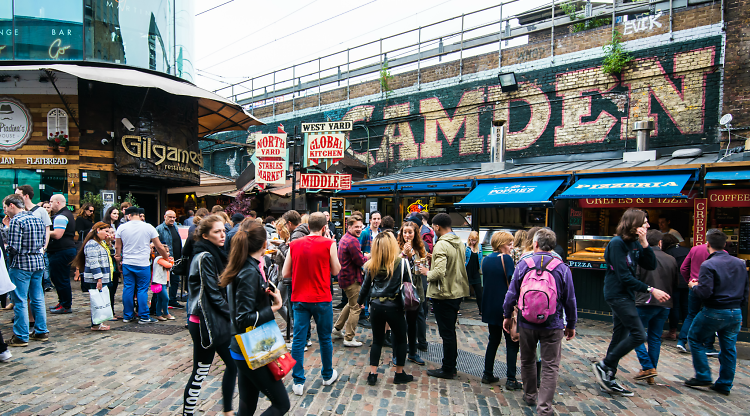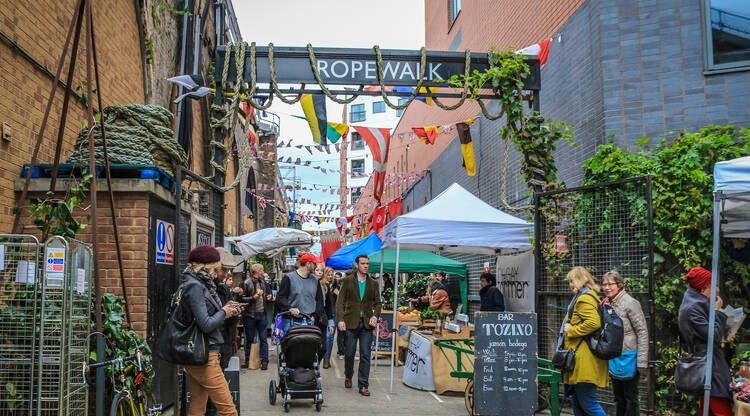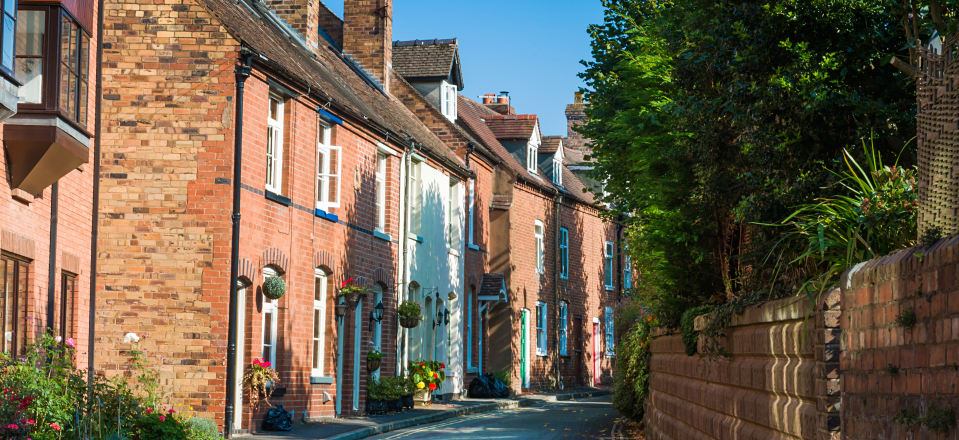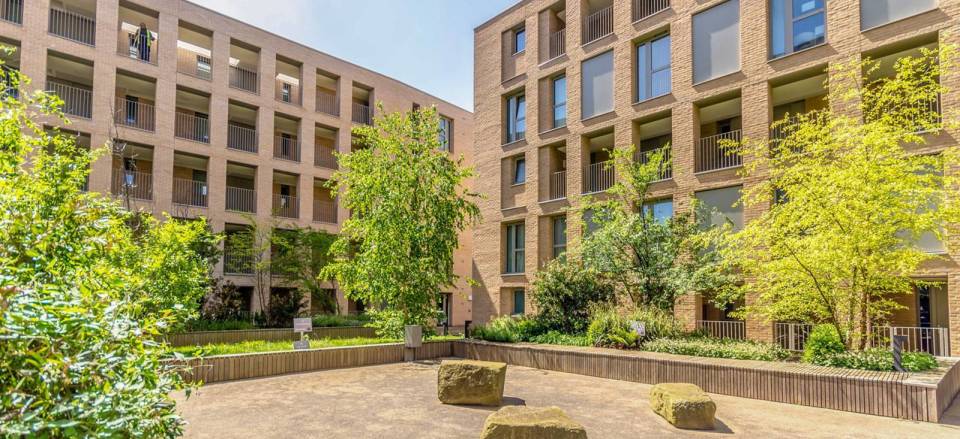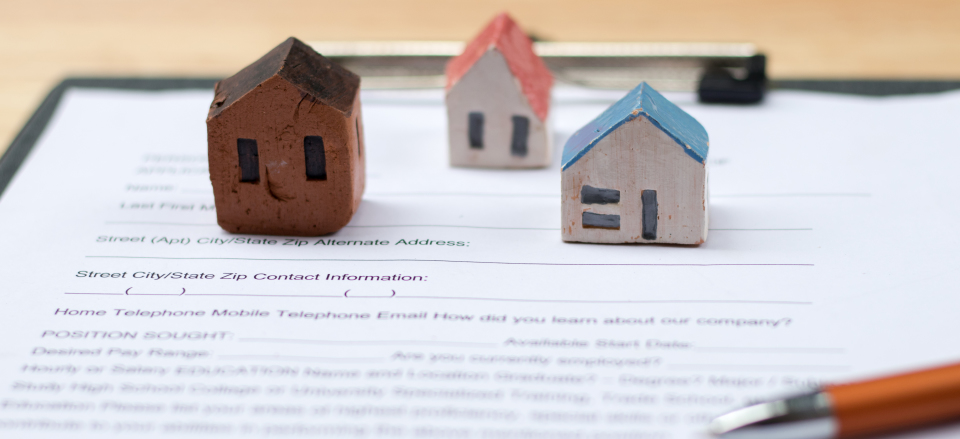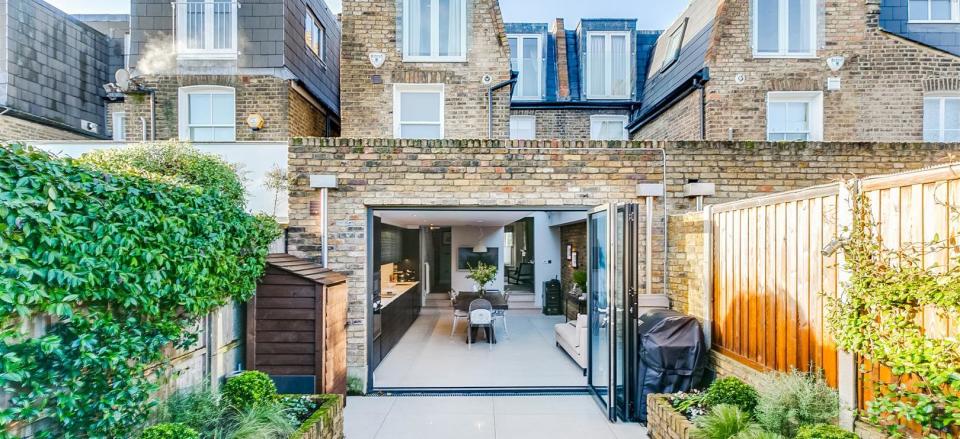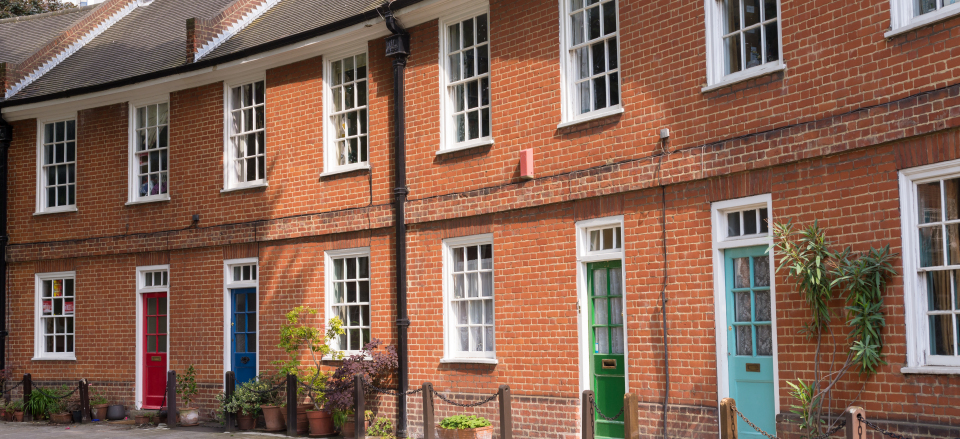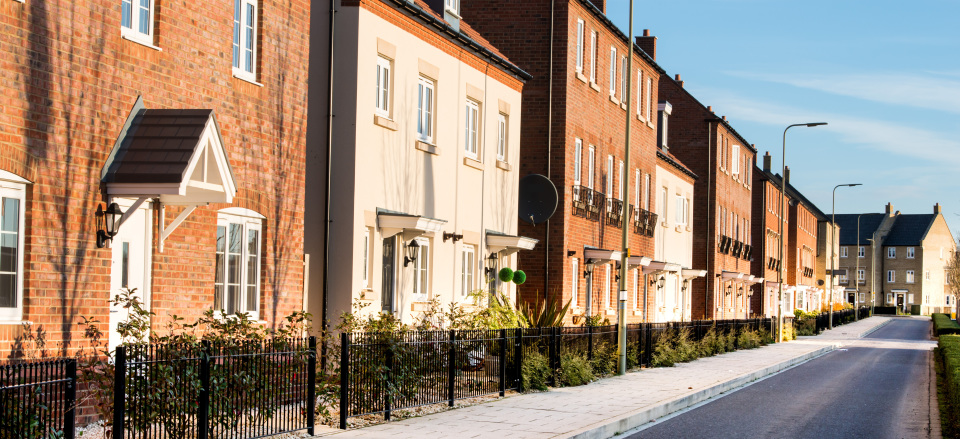The best markets in London
From the famous Borough Market to antiques fest Portobello Road, here’s our pick of the best stalls in town to pick up food, flowers, fashion and a whole lot more
Markets have been a central part of London life for centuries. Historically, they were a cornerstone of the community and the best place to go for the weekly shop. Of course, shopping habits have changed since then. The boom in supermarkets may have dented the market’s popularity in the past, but thanks to a diversified offering and renewed support, both locals and tourists continue to flock to markets around the capital. Nowadays, there’s a huge range of markets across London, from farmers markets and fashion markets to street food, vintage and antique markets. But if you’re only in town for a quick visit, any one of these are worth making a beeline for. Here’s our pick of the very best markets in London, from Borough Market’s foodie stands to stalls filled with flowers on Columbia Road.
1. Columbia Road Flower Market
Situated just off Shoreditch’s main drag, this weekly flower market is an East End gem. Every Sunday from 8am-3pm, the picturesque cobbled street is packed with traders selling bulbs, herbs, shrubs, bedding plants and bucketfuls of cut flowers. Flanking the stands are around 60 interesting independent shops and cafés, many open only at weekends. Arrive super-early for the best selection of flowers, or as the market’s winding down to bag a bargain. In between, it gets very busy indeed.
-------------------------
2. Borough Market
South Bank
Nestled next to London Bridge, this iconic food market has existed in some form since at least 1014. Though it still operates as a wholesale market in the early hours, it’s now best known as a foodie’s paradise where discerning Londoners come to buy top-quality meats, fish, fruit and veg, fresh-baked bread, cakes and sweet treats, oils and vinegars, and pretty much anything else they desire. There’s also an amazing array of street food, and a dedicated covered area to chow down in. Borough Market is open Monday to Saturday, but you’ll find the full selection of stalls from Wednesday to Saturday. It gets hella busy, so arrive bright and early to enjoy a more peaceful peruse.
-------------------------
3. Broadway Market
South Hackney
Since being relaunched in 2004, this Hackney street market has become a magnet for hipsters. Every Saturday from 9am to 5pm, it’s packed with arty students and East End creative types who come to fill their tote bags with organic groceries, vintage clothes, fresh flowers, coffee, books and unusual handmade gifts. Broadway Market has so many street food options, it’s practically impossible to go hungry here, though not everyone will have the stomach for a Yorkshire Burrito. The only downside is how busy its gets, especially on sunny Saturdays, so arrive early to beat the hordes.
-------------------------
4. Old Spitalfields Market
Spitalfields
Following its noughties rejuvenation, this covered market opposite Liverpool Street station has blossomed into a major shopping destination. Now open seven days a week, the central concourse is filled with stalls selling contemporary and vintage clothes, bespoke children’s toys, home items and artisan food products. Inside, you’ll also find a decent selection of permanent retail outlets and restaurants including popular chains The Real Greek and Las Iguanas. There’s extra buzz on Thursdays, when it welcomes Old Spitalfields Antiques Market, a bonus cluster of stalls offering collectables and objets d’art from 8am to 5pm. And if you’re still not shopped out, Brick Lane Market is a quick five-minute walk away.
-------------------------
5. Greenwich Market
Though it’s situated in historic Greenwich (in a World Heritage Site, no less), this eighteenth-century indoor market is no relic. Open Tuesday to Sunday from 10am-5.30pm, it’s home to around 120 stalls selling jewellery, clothes, second-hand furniture, interesting gifts and general bric-a-brac. On Tuesday and Thursday you’ll find more antique stalls; other days have a greater arts and crafts presence. Once you’ve refuelled at one of 40 food and drink stalls, you can pay a visit to the nearby Cutty Sark or Royal Observatory. Or just hop on a Thames riverboat back to central London.
-------------------------
6. Portobello Road Market
Portobello Road
The world’s largest antiques market occupies a prime stretch of Notting Hill, an area that manages to feel diverse and surprising despite heavy gentrification (how Hugh Grant in that movie could afford a one-person flatshare despite working in a bookshop is beyond us) in the ’90s. Portobello Road Market is really five markets in one, with different sections dedicated to second-hand goods; clothing and fashion; household essentials; fruit, veg and other food; and the main event: antiques. You’ll find the greatest range of antiques stalls on Saturdays, when the market gets so busy that it’s wise to arrive before 11am. Portobello buzzes on Fridays too, but this fascinating street packed with characterful cafés, shops and drinking spots is worth a visit any time.
-------------------------
7. Brixton Village and Market Row
Brixton
Brixton is one of the capital’s most vibrant and culturally diverse neighbourhoods, and these adjacent indoor markets reflect its unique and varied flavour. In recent years, they’ve become a gourmet destination where hungry Londoners can grab a table at places serving seafood, superior pizza, Portuguese cuisine, Mexican food, Jamaican/European fusion and all manner of Caribbean delicacies. But they contain plenty for shoppers, too. A leisurely amble through the arcades reveals a treasure trove of independent outlets selling clothing, jewellery, homeware, art, antiques and unusual gifts. Brixton Village and Market Row are open from 8am to 11.30pm every day, except for Monday, when they close early at 6pm.
-------------------------
8. Covent Garden Market
Covent Garden
his grand neoclassical building in the heart of Covent Garden is a London landmark. Since 1980, after traffic congestion forced the traditional fruit-and-veg market to relocate, Covent Garden Market has reinvented itself as a serious shopping destination. On Mondays, it’s filled with stalls selling antiques and collectables; then from Tuesday to Sunday, it welcomes a broader range of traders offering everything from handmade jewellery to artisan soaps. There are plenty of permanent retail units, too, mainly housing fancy brands like Mulberry and Tom Ford. Once you’re done exploring, which could honestly take hours, Jubilee Market across the piazza is great for gifts and trinkets.
-------------------------
9. Camden Market
Camden Market
Technically several adjoining markets, this sprawl of stalls stretching from Camden Town tube to the Regent’s Canal is London’s fourth most popular visitor attraction. Every week, around 250,000 people come here to shop, sample street food and soak up the distinctive, still-grungy atmosphere. Camden Lock Market is an arts-and-crafts haven while the Stables Market is a trendy spot for everything from quirky furniture to fetish clothing. Nearby Buck Street Market on Camden High Street (the one under a sign that reads ‘The Camden Market’) is best for T-shirts and touristy trinkets. The markets in Camden Town are open seven days a week and always seem to be buzzing.
-------------------------
10. Brick Lane Market
Brick Lane
On Sundays, the streets of East London’s bustling Brick Lane are lined with stalls selling anything and everything. You’re bound to find bargain fruit and veg, household items and electrical products, but this market’s USP is its sheer unpredictability: you could bag a second-hard bargain, or spend hours sifting through trinkety tat. Brick Lane’s recent ‘trendification’ is reflected in the various splinter markets that surround it. Visit Backyard Market for arts and crafts, Sunday Upmarket for street food and interesting gifts, The Tea Rooms for vintage bric-a-brac, and the Boiler House Food Hall for more snack and drink stalls. Brick Lane’s various Sunday markets surely have something for everyone.
-------------------------
11. Alfies Antique Market
Marylebone
Housed in a huge Egyptian-style art deco building in Marylebone, Alfie’s Antiques Market has been attracting collectors and casual buyers alike for more than 40 years. Spread over four floors you’ll find around 100 different dealers selling an eclectic selection of jewellery, homeware, decorative items, memorabilia, furniture and artwork. Full-on bargains are few and far between, but that’s only because the quality of goods on offer is so high. Alfie’s Antiques is open 10am-6pm from Tuesday to Saturday; once you’ve found your dream objet, you can enjoy a bite and a tipple at the rooftop café, a famous sun trap.
-------------------------
12. Maltby Street Market
Bermondsey
Located in increasingly lively Bermondsey, Maltby Street Market is a bit like a calmer, more curated version of Borough Market. It’s only been going since 2010, doesn’t open during the week, and the tourists haven’t quite cottoned on yet. So, if you can’t face the masses, this is the place to come when you’re having a Nigella moment and want to stock your kitchen cupboards with high-end condiments and tipples you can’t get at Tesco. Nestled in and around the atmospheric Victorian rail arches of the Ropewalk you’ll find around 30 artisan food and drink traders selling everything from craft beer to Mozambique-style peri-peri meats.
-------------------------
Leasehold homeowners pay £447 million a year in ground rent
One in 10 people who own a leasehold property says the cost of ground rent impacts their quality of life, and a third would struggle to afford further increases.
Homeowners in leasehold properties are collectively shelling out £447 million in ground rent every year.
The average person pays £319 in the rent annually, with 9% saying the cost impacts their quality of life, according to trade body NAEA Propertymark.
More than a third of people with leasehold homes said they would no longer be able to afford to live in their property if the ground rent increased, with 6% admitting they were already struggling with the cost.
One in 10 homeowners faced a hike in rent costs since they first moved into their property, with the increase typically coming after just seven years.
Mark Hayward, chief executive at NAEA Propertymark, said: “Even though many leasehold contracts include a ‘ten-year ground-rent freeze’, most developers sell the freehold on to a third party within a few years of completion and those terms go out the window, meaning homeowners are faced with unexpected and escalating costs.”
Why is this happening?
While in the past leasehold properties tended to be restricted to flats, there has been a growing trend among developers to sell houses on a leasehold-basis as well.
Unlike a freehold property, with a leasehold one, homeowners do not own the property outright but only have the right to live there for a set period.
They also have to pay annual rent on the land on which the property sits.
A recent report by the Housing, Communities and Local Government Committee warned that people living in leasehold properties were treated as a steady source of profit by developers, freeholders and managing agents.
It added that in some cases ground rents had doubled every 10 to 15 years.
Who does it affect?
Government statistics suggest there were 4.2 million leasehold properties in England in 2015-16, two thirds of which were flats.
But the NAEA Propertymark study suggested there was a lack of understanding about leaseholds, with one in five people saying they did not understand in detail how much their ground rent could go up by, while 46% said if they had known how much it could increase they might not have purchased the property.
What’s the background?
Earlier this month, the Competition and Markets Authority launched an investigation into the leasehold property market to see if consumers were being treated fairly when they bought a home.
It plans to look into whether people who bought leasehold properties were mis-sold them and not given the information they needed to fully understand their obligations.
It will also consider whether the terms of the leaseholds are potentially unfair, with homeowners being forced to pay excessive fees.
The Government has also expressed concern about the plight of people in leasehold properties. Last year it launched a consultation on imposing a cap on ground rents for new-build leasehold homes.
It has also proposed that the majority of new-build houses should be sold as freehold.
Top 3 takeaways
-
Homeowners in leasehold properties are collectively shelling out £447 million in ground rent
-
The average person pays £319 in ground rent, with 9% saying the cost impacts their quality of life
-
More than a third of people with leasehold homes said they would no longer be able to afford to live in their property if the ground rent increased, with 6% saying they were already struggling with the cost.
Confident homeowners predict 4.8% house price growth
Homeowners in northern regions are most optimistic, while those in the south are more likely to predict falls.
Confidence in the housing market remains high with homeowners expecting property prices to increase by 4.8% in the coming six months.
Despite the recent slowdown in house price growth, 81% of people think property values will increase in their area, according to Zoopla.
But there was significant regional variation, with homeowners in Yorkshire and Humber most likely to predict further price rises at 91%, while a third of people in London expect house price falls.
Those in the northern regions tended to be more optimistic about the outlook for the housing market, while those in southern ones were most likely to expect a downturn.
Laura Howard, spokesperson for Zoopla, said: “Despite evidence of a slowing housing market and ongoing political uncertainty, homeowners remain optimistic about the future of property prices.”
Where are homeowners most optimistic?
Homeowners in Yorkshire and Humber were most likely to expect house prices to increase in the next six months at 91%, followed by those in the north west at 90.5% and people in Scotland at 90.3%.
People in Wales were also optimistic, with 89.5% anticipating further growth.
In terms of actual price growth, those in Scotland are expecting the biggest gains of 5.5% in the coming six months.
They are followed by homeowners in the north east at 5.4%, while people in the West Midlands and East Midlands think prices will rise by 5.1%.
Where do people expect to see house price falls?
Homeowners are least optimistic in London, where 32.8% predict house prices will drop during the next six months, losing an average of 6.7% of their value.
Those in the south east are also downbeat, with 26.1% expecting price falls of around 6.1%.
Despite this, there are still more people in these regions who expect the cost of property to continue rising than those who expect it to fall, with 67.2% of people in London and 73.9% of those in the south east expecting price rises.
The biggest price falls were predicting in the north west, where those who think property values will decline expect them to be 8.5% lower in six months’ time.
What’s the background?
Latest UK Cities House Price Index suggests homeowners may be too optimistic, with this showing property price growth had slowed to just 1.7% in the 12 months to the end of April across the UK as a whole.
That said, homeowners in Yorkshire and Humber who are predicting price rises of 4.5% are not too wide of the mark, with property values in Sheffield currently rising at an annual rate of 4.4%, while in Leeds annual house price inflation is running at 3.5%.
It is also no surprise that people in London are the least confident, with property values in the capital falling by an average of 0.5% during the past year.
Howard points out that even if consumers’ forecasts fail to prevail, sentiment still plays a crucial role in the health of the housing market.
She said: “A feeling of stability means buyers are more likely to start actively looking for their next home, confident that now is the right time to make a purchase. And, in turn, an active pool of buyers will encourage sellers to list their homes for sale.
“Measured confidence in the housing market is also more likely to see homes marketed at the right price which, by its nature, generates demand.”
Top 3 takeaways
- Homeowners expect property prices to increase by 4.8% in the coming six month
- 81% of people think property values will increase in their area, with people in northern regions more optimistic than those in southern ones
- Homeowners in Yorkshire and Humber are most likely to predict further price rises at 91%, while a third of people in London expect house price falls.
High rents limiting young people’s mobility
Young people are being prevented from moving to better paid jobs because of the high cost of being a tenant.
High rents are preventing young people from moving to better paid jobs with mobility nearly halving during the past two decades.
Only 18,000 people aged between 25 and 34 started a new job and moved to a new home in 2018, down from 30,000 in 1997, according to a report by the Resolution Foundation.
The group blamed the situation on the high housing costs young people face, which in many cases almost negated the higher salary they would earn by moving to a different part of the country.
It found that once housing costs were deducted, the average private renter moving from a low-paying area, such as East Devon, to a mid-paying area, such as Bristol, would be just 1% better off, compared with being 16% better off in 1997.
The situation was even more extreme for someone moving from a low-paying area straight to a high-paying one, such as Croydon. While young people would have seen a financial gain of 26% in 1997 for making such a move, last year they would actually have been 3% worse off.
Lindsay Judge, senior policy analyst at the Resolution Foundation, said: “Young people today are often stereotyped as being footloose when it comes to work. But in fact, they are moving around for new job opportunities far less frequently than they used to.
“A key reason why people move around for work is the lure of a bigger salary. But increasingly those pay gains are being swallowed up by high housing costs.”
Why is this happening?
The report found people were less mobile despite a higher proportion living in the private rented sector, which is traditionally associated with enabling mobility.
Instead, it said the high rents they faced paying meant moving to a better paid job in a more expensive location often did not make financial sense or reduced the lifestyle uplift they would receive.
It pointed out that rents have risen fastest in higher-paying areas of the country, increasing by almost 90% in these locations, compared with a jump of 70% in places where pay was lowest.
The Foundation noted, however, that there were also likely to be non-financial reasons why young people weren’t moving, such as preferring to stay close to their parents and local networks.
Who does it affect?
Young people living in the private rented sector were the least likely to be mobile compared with homeowners or those in social housing, with the number of people changing their job and home in the past year falling by two-thirds compared with 1997.
But the situation also affects other age-groups, with the increasing price gap between property in low-paying areas and that in higher paying ones making it harder for older homeowners to move without having to significantly downsize.
What’s the background?
The report warned that the lack of mobility could stunt young people’s pay and career prospects.
It found that the typical pay rise was three times higher for those who moved area for work, compared with those who stayed in the same job.
While the situation makes grim reading for young people, it is worth remembering that even expensive locations often still have pockets of affordability.
Top 3 takeaways
-
High rents are preventing young people from moving to better paid jobs with mobility nearly halving during the past two decades
-
Only 18,000 people aged between 25 and 34 started a new job and moved to a new home in 2018, down from 30,000 in 1997
-
High housing costs are negating the higher salary people would earn by moving to a different part of the country.
Cost gap closing between 2- and 5-year fixed rate mortgages
Remortgaging? If you’ve decided you want to fix, the next big question is how long for. Here's the latest mortgage analysis to help you decide.
If you're coming to the end of your mortgage deal and looking for a new fixed rate, your main options will be to fix in for either two or five years.
Traditionally, five-year fixed rates have come with higher interest rates than those charged on two-year deals, as homeowners pay for the longer-term security.
But the difference between rates for the two mortgage types now stands at just 0.36%, according to new research from Moneyfacts, which is the lowest differential in seven years.
The average interest charged on two-year fixed rate loan is now 2.49%, compared with 2.85% for a five year one.
Darren Cook, finance expert at Moneyfacts.co.uk, said: “It seems that the intense competition between lenders within the two-year fixed rate sector is also appearing in the five-year fixed rate market, with the average five-year fixed rate falling by 0.06% more than its two-year counterpart since January this year.”
What are the pros and cons of each deal length?
The main advantage of a five-year fixed rate mortgage over a two-year fixed rate deal is that homeowners have the security of knowing exactly what their monthly mortgage payments will be for the next five years, regardless of what happens with the Bank of England base rate.
At the same time, they do not face the hassle or cost of having to remortgage after just two years.
With mortgage arrangement fees on a best-buy two-year fixed rate loan currently standing at £1,995, homeowners could save themselves a considerable sum by fixing for a longer period.
What else should borrowers consider?
While the gap between a two-year and a five-year fixed rate mortgage may have narrowed, five-year deals are still more expensive.
A homeowner with a £200,000 mortgage would pay more than £450 more per year if they opted for an average priced five-year deal compared to a two-year one.
The other downside of five-year deals is that homeowners are locked into them for longer.
While this may sound like good news if interest rates are rising, it can become expensive if your circumstances change and you need to sell your home.
While many fixed rate mortgages are portable, meaning they can be moved to a different property if you sell your home and buy a new one, if you want to exit the mortgage altogether, you can expect to pay a hefty penalty.
So-called early redemption fees vary between lenders, so make sure you know what you are signing up to when you take out your loan.
As a general rule, lenders typically charge the equivalent of the number of years left on the loan as a percentage of the mortgage that is outstanding.
For example, if you have three years remaining on your fixed-rate term and £150,000 in outstanding mortgage debt you will be charged 3% of this sum or £4,500.
What about 10-year deals?
The average interest rate charged on a 10-year fixed rate mortgage has also fallen since the beginning of the year to stand at 3% now.
Although the difference between rates on a five-year and 10-year loan has widened slightly during that period, borrowers still only pay 0.15% more to fix their interest rate for a decade.
As with five-year deals, opting for a 10-year loan not only gives greater certainty but also potentially saves a significant sum on arrangement fees.
But with early redemption penalties as high as 7% of the outstanding mortgage sum if you need to exit in the first two or three years, borrowers need to be confident they will see through the term.
Some 10-year fixed rate mortgages have lower early redemption penalties, so it is worth bearing this in mind and shopping around if you opt for one of these deals.
Top 3 takeaways
- The gap between the cost of a two-year fixed rate mortgage and a five-year one has fallen to a seven-year low
- The rate differential between the two mortgages is now just 0.36%
- The average interest charged on a two-year fixed rate mortgage is 2.49%, compared with 2.85% for five-year deals.
Homeowners allowed to build property extensions without planning permission
The Government is making a temporary law that allows people to build rear extensions without having to go through the planning process permanent.
Thousands of homeowners have been given the green light to extend their properties without having to apply for planning permission.
The Government introduced temporary rules giving homeowners more freedom to build extensions in 2013. It has now made them permanent.
The rules enable homeowners in England to build single-storey rear extensions of up to six metres on a terraced or semi-detached property and eight metres on a detached one without having to submit a full planning application.
Housing Minister Kit Malthouse said: “These measures will help families extend their properties without battling through time-consuming red tape.
“By making this permitted development right permanent, it will mean families can grow without being forced to move.”
Why is this happening?
The move is part of a package of reforms designed to help make the property market more efficient.
Not only will families have more certainty about the modifications they can make to their homes, but the Government is also scrapping restrictive planning rules for commercial property to make it easier for business owners to respond to changing trends on the high street.
Under so called permitted development rights, property owners will be allowed to convert shops into offices without having to go through the planning process.
Who does it affect?
The move is good news for homeowners who want to extend their existing property rather than face the cost and upheaval of trading up the ladder.
The Government sought to reassure anxious neighbours that the measures took into account the potential impact extensions would have on nearby properties, by limiting their length and height.
It is hoped that giving property owners the right to change shops into offices will also help to breathe new life into beleaguered high streets.
What’s the background?
More than 110,000 extensions have been completed since 2014 under the relaxed rules.
But homeowners should note that permitted development rights do not apply to flats or maisonettes, as well as to properties in certain ‘designated areas’, such as conservation areas, national parks and areas of outstanding natural beauty.
The Government has previously also proposed making it easier to extend properties upwards.
It launched a consultation last year on allowing spaces above shops, garages and car parks to be converted into homes, especially in areas of high demand.
It has set a target to have 300,000 new homes built every year, with 1 million properties added to the UK’s housing stock by the end of 2020.
But building levels still remain well below this figure, with only 165,000 new homes built last year.
Top 3 takeaways
-
Thousands of homeowners have been given the green light to extend their properties without having to apply for planning permission
-
The Government has made temporary rules giving homeowners more freedom to build extensions permanent
-
The rules enable homeowners in England to build single-storey rear extensions of up to six metres on a terraced or semi-detached property and eight metres on a detached one without submitting a full planning application.
Owning your own home is the key to happiness
Homeowners have a greater sense of wellbeing than renters, according to the latest ONS research.
Owning a property could be the key to happiness, with homeowners reporting a greater sense of wellbeing than renters.
Those who own a property, either outright or with a mortgage, have higher levels of life satisfaction than people renting, regardless of tenure.
Social housing tenants were slightly more likely to be dissatisfied with their lives than those who rented in the private sector, although they were also more likely to be unemployed and in poor health, according to the Office for National Statistics.
Director of Benham and Reeves, Marc von Grundherr, said: “We’re a nation of aspirational homeowners and so it’s no surprise that those that have managed to reach the life mile marker of owning their own home will feel more satisfied with themselves, compared to those that remain resigned to a rental market plagued by issues of affordability.
“However, with employment levels at record highs and those listed as employed leading the way when it comes to homeownership, we should hopefully see more and more tenants make the jump to homeowner over the coming years and enjoy an uplift in life satisfaction when they do.”
What makes people happiest?
Perhaps unsurprisingly, people’s health had the biggest impact on happiness, with people reporting to be in good or very good health also having the highest levels of life satisfaction.
Age also had an impact, with younger people reporting high levels of life satisfaction, with happiness falling in middle age but rising again in people’s later years.
What role does money play?
Money plays a significant role in people’s level of life satisfaction, but not necessarily in the way you might think.
For example, having a higher level of household spending was more strongly related to feeling happy than having a high income.
The way people spent their money also appeared to have an impact, with those spending a higher share of their cash on experiences, such as nights in hotels and eating in restaurants, more likely to feel very satisfied with their life than those who spent more on food, insurance and mobile phone subscriptions, even if their overall level of spending was the same.
In terms of economic activity, perhaps unsurprisingly, people who were retired were happiest, while those who were unemployed or could not work due to sickness or disability were the least satisfied.
People’s economic status now has less of an impact on how happy they are compared with when the same research was carried out six years ago.
What about love?
Being married or in a civil partnership led to the highest levels of happiness, with those who were separated most likely to report feeling dissatisfied with their life, followed by those who were widowed.
People who were single were slightly more likely to be unhappy than those who were divorced.
Those with dependent children were also likely to feel happier about their lives than those who did not have children at home.
Marital status now plays a bigger role in how happy people feel compared with six years ago.
It also has a greater impact on their sense of satisfaction than their economic status.
Top 3 takeaways
- People who own a property, either outright or with a mortgage, have higher levels of life satisfaction than people renting, regardless of tenure
- Social housing tenants are slightly more likely to be dissatisfied with their lives than those who rented in the private sector
- Overall, people’s health, marital status and economic activity had the highest impact on how positively they felt about their life.
Property Ombudsman enquiries hit record high
The Property Ombudsman handled more than 4,200 complaints about property professionals last year, 16% more than the year before.
Enquiries to The Property Ombudsman hit a record high in 2018, and consumers have been handed almost £2.2m after making formal complaints about property agents.
The service, which is one of three ombudsmen that handles property-related disputes, received 29,023 enquiries during the year, 22% more than in the previous 12 months.
Out of these enquiries, 4,246 progressed to become formal complaints, 16% more than in 2017.
Two-thirds of these complaints were upheld by the ombudsman, with property agents ordered to make a financial award in nearly 2,400 of the cases.
In a small minority of instances, agents were referred to the ombudsman’s Compliance Committee for possible expulsion from the scheme.
Katrine Sporle, Property Ombudsman, said: "2018 was an extremely busy year for The Property Ombudsman with increasing demand for the service."
However, she added: "This does not necessarily mean that agents’ standards are slipping, but rather that consumers are increasingly aware of their rights."
Why is this happening?
The boom in complaints was driven by dissatisfied landlords and tenants, with issues relating to lettings accounting for 2,450 of the total complaints handled.
A further 1,304 complaints related to sales, while 349 were about residential leasehold management.
The rental sector also accounted for the largest financial awards, with compensation averaging £845, compared with £604 for issues relating to sales and £497 for ones about leasehold management.
Who does it affect?
Within the letting sector, landlords were most likely to be dissatisfied with the service they received from property professionals, with 54% of complaints made by landlords and 42% made by tenants.
For the third year running, Greater London accounted for the highest volume of complaints at 20%, followed by the south east at 17% and the north west at 11%.
People were most likely to complain about communication and record keeping, with management, tenancy agreements and inventories and deposits also common areas of grievance.
On the sales side, 60% of complaints were made by people selling a property, with 34% made by those buying one.
Record keeping was the most common cause of complaint in this area as well, followed by marketing and advertising, and instructions, terms of business, commission or termination.
The south east saw the highest number of complaints against estate agents, accounting for 16% of the total, followed by Greater London and the north west at 11% and 9% respectively.
What’s the background?
The Government recently ran a consultation on creating a single ombudsman services for the property market.
The sector is unusual in that it has three different ombudsman schemes, not all of which cover all aspects of buying or renting a home.
Other ideas floated include setting up a New Homes Ombudsman who will handle disputes between homebuyers and housebuilders.
In August last year, the Ombudsman Service, which also handled property disputes withdrew its services, after saying it no longer wanted to offer a “broken solution to a broken market”.
Top 3 takeaways
-
Consumers were handed nearly £2.2m in compensation in 2018 after making formal complaints about property professionals
-
The service received 29,023 enquiries during the year, 22% more than in the previous 12 months
-
Out of these enquiries, 4,246 went on to become formal complaints, 16% more than in 2017.
How far up the housing equity ladder are you?
The age at which mortgage borrowers are reaching significant equity milestones with their homes has increased since the financial crisis.
Homeowners are taking longer to repay their mortgages than before the financial crisis, despite putting down bigger deposits when they first buy a home.
In 2007, the average homeowner had netted at least 70% equity in their property by the time they were aged between 51 and 55. But today borrowers are waiting five years longer to reach this milestone.
Younger borrowers are also putting down bigger deposits than they were a decade earlier, according to insurer Royal London.
The typical 18 to 25-year-old put down 10% to 15% as a deposit last year, compared with just 5% to 10% for the same age group in 2007.
Despite this, by the time homeowners are aged between 26 and 30, they are typically sitting on an equity stake of just 15% to 25%, compared with one of 25% to 50% for the same age group in 2007.
Becky O’Connor, personal finance specialist at Royal London, said: "Moving up the housing equity ladder helps you to access better interest rates and makes homeownership more affordable.
"But as the age of first-time buyers has risen, families are having to wait until later in life before they make a serious dent in their mortgage and can benefit from lower rates."
Why is this happening?
Royal London attributed some of the difference in equity levels to more stringent affordability rules introduced for lenders since the financial crisis.
And changes to the rate at which house prices are rising has also had an impact.
Homeowners accrue equity in their properties faster during periods of high house price growth, but in the current subdued market their main means of increasing the proportion of their property that they own outright is through mortgage repayments.
Who does it affect?
Borrowers are typically aged between 36 and 40 before they have at least a 25% equity stake in their home.
And it is not until homeowners reach the 51 to 55 age bracket that they own at least 50% of their property.
The proportion of borrowers above the state pension age of 65 who need a loan of between 30% and 50% of their home’s value has been steadily increasing since the financial crisis.
Last year, 27% of 66 to 70-year-olds were in this position, compared to 21% in 2009.
What’s the background?
While owning a bigger share of their property might make homeowners feel good, there is a practical and financial side to having a large equity stake too – mortgage rates are typically lower for people who are borrowing a smaller percentage of their home’s value.
A best-buy two-year fixed rate mortgage for someone with only a 10% deposit or equity stake is 1.84%, but this falls to 1.54% for someone with a 40% stake.
As a result, annual repayments on a £200,000 mortgage are more than £350 a year cheaper, giving homeowners more money to play with if they want to make overpayments on their loan.
Top 3 takeaways
- Homeowners are taking longer to repay their mortgages than before the financial crisis
- In 2007, the average person owned 70% or more of their home by the time they were aged 51 to 55, but today borrowers are having to wait five years longer to reach this milestone
- Younger borrowers are also putting down bigger deposits than they were a decade earlier
It may be a subdued housing market, but Nationwide said the balance of supply and demand had shifted in favour of buyers.
The housing market remained subdued in April with prices edging ahead by just 0.4% as Brexit uncertainty continued to dampen activity.
The average value of a UK home has risen by only 0.9% during the past 12 months, to leave the typical property costing £214,920, according to Nationwide Building Society.
Separate figures showed falling transactions had led to a 26% drop in stamp duty receipts during the first three months of the year, compared with the previous quarter.
A total of £1.76bn was raised through the tax in England, Wales and Northern Ireland, according to residential property advisory firm LCP's analysis.
That's £623m less than in the fourth quarter of last year, following a 21% drop in purchases liable for stamp duty.
LCP's analysis added back transactions and receipts from the Welsh Revenue Authority, since stamp duty has been replaced by land transaction tax in Wales.
Receipts were down across all categories, including first-time buyer homes, high-end properties and people purchasing second homes.
Naomi Heaton, CEO of LCP, said: “There is no doubt which external force is having the most destructive impact on the UK housing market, and that is Brexit.”
Why is this happening?
The political and economic uncertainty caused by Brexit has caused many potential buyers to delay their moving plans until the outlook is clearer.
This fall in activity, combined with already stretched affordability, has caused the property market to lose momentum, with April the fifth month running in which annual house price growth has been less than 1%.
The slowdown has been particularly acute at the top end of the market, which has further dented stamp duty receipts, as the tax is charged at a higher rate of 10% on the portion of a property costing more than £925,001, and at 12% on the portion costing more than £1.5m.
Who does it affect?
While the slowdown in the market is bad news for the Government’s stamp duty take, it is good news for buyers.
Nationwide said the balance of supply and demand in the market had still shifted in favour of buyers, putting people who want to go ahead with a purchase in a strong position to bargain.
First-time buyers are particularly benefiting from the situation, while they are also being supported by a raft of government measures to help people get on to the property ladder.
What’s the background?
Activity in the market looks unlikely to improve in the near future, with figures released by the Bank of England showing just 62,341 mortgages were approved for house purchase in March, nearly 5% fewer than during the previous month.
Hansen Lu, property economist at Capital Economics, said: “Sluggish house price inflation reflects the already high level of prices relative to incomes, as well as the effects of Brexit uncertainty.
“Looking ahead, with Brexit having been delayed until the start of the fourth quarter, housing market conditions are set to stay weak – making a recovery in housing demand unlikely.”
He added that even once a Brexit deal is done, property values still remain high relative to incomes, so prices are unlikely to start rising immediately.
Top 3 takeaways
- House prices edged ahead by just 0.4% in April
- The average value of a UK home has risen by only 0.9% during the past 12 months, to leave the typical property costing £214,920
- There was a 26% drop in stamp duty receipts during the three months of the year, on the back of falling transactions
May 5, 2019










